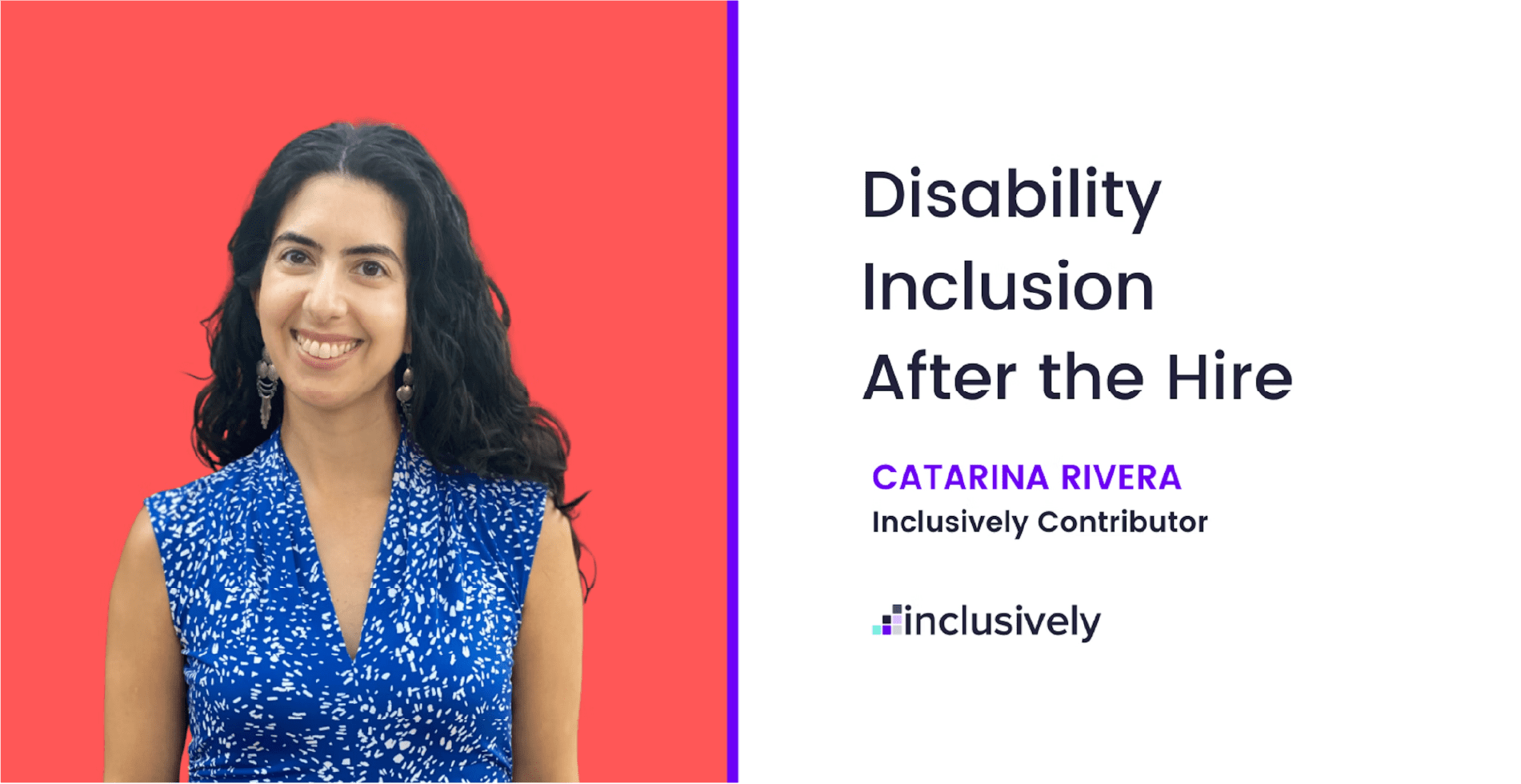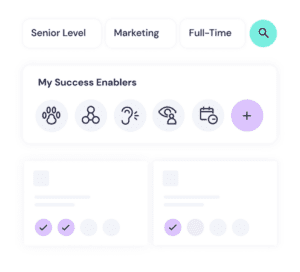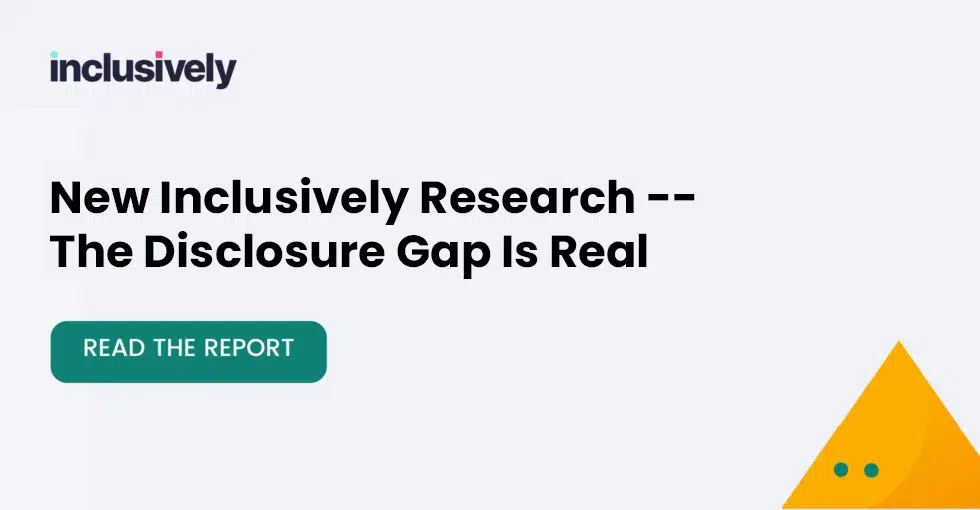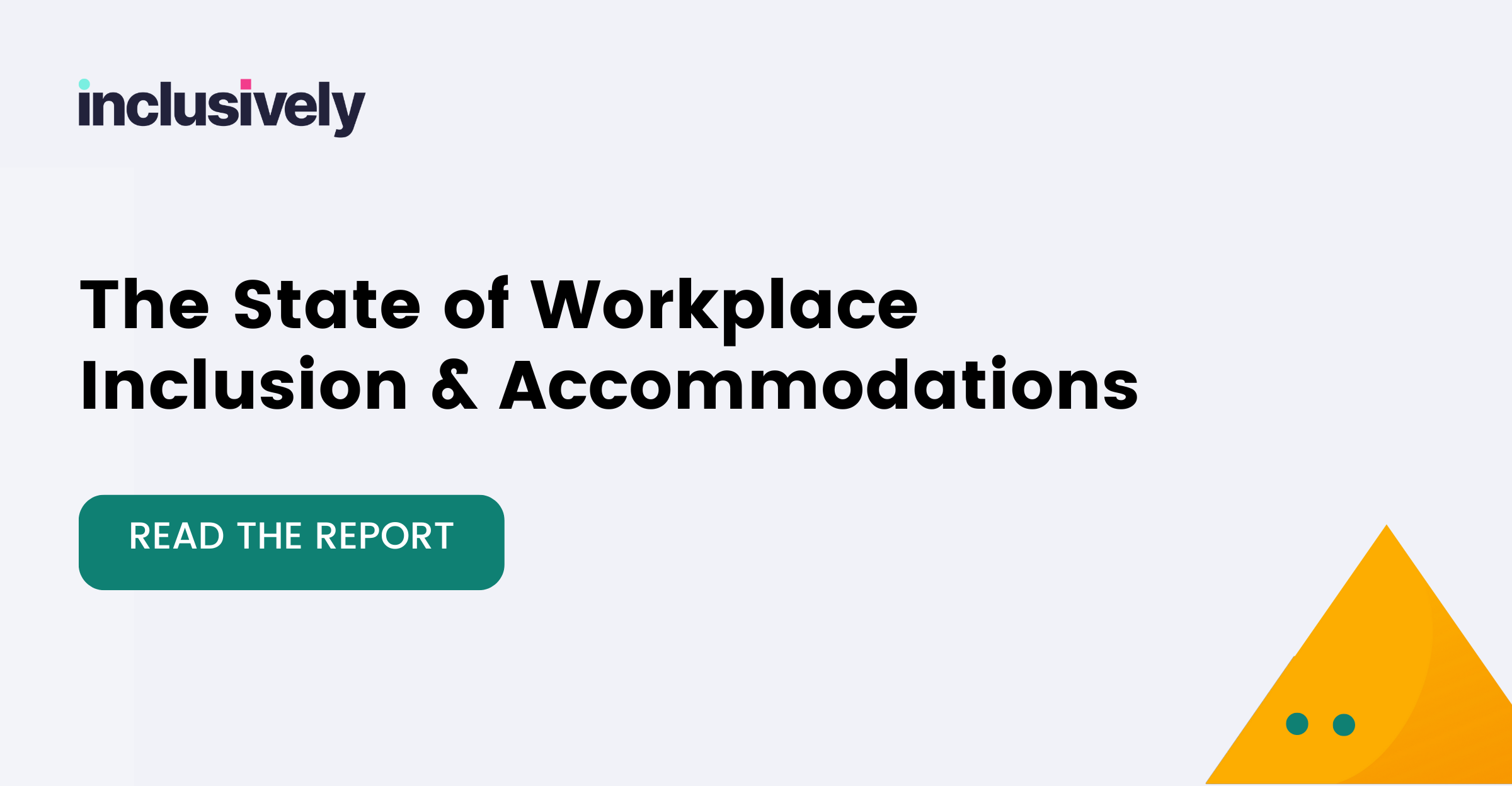In celebration of National Disability Employment Awareness Month, Catarina Rivera shares her advice for practicing inclusion beyond the hiring of disabled talent
Focusing on disability employment and disabled people getting hired is critically important. We also need to think beyond the hire, because that’s only the first step. Employees need to be included and supported in order to contribute to their fullest potential. The great news is that ensuring that companies practice disability inclusion actually improves the workplace for everyone! This article will share why disability inclusion is important as well as some best practices for disability inclusion for executive leadership, HR, and middle managers.
Why is disability inclusion important?
- Hiring disabled employees should not be about checking a box or receiving tax benefits.
- For companies that are hiring disabled employees and are ready to do the work, investing in a strategy for disability inclusion will yield many benefits.
- It makes the workplace better for all employees since inclusive practices support everyone.
- Disability inclusion goes beyond reasonable accommodations and what’s required by the Americans with Disabilities Act (ADA).
- It embeds inclusive practices into the culture of the organization.
As someone who is hard of hearing and has a vision disability, I’ve experienced challenges when organizations are not inclusive. For example, I’ve been invited to many virtual meetings that do not have closed captions. These meetings are less accessible to me and require me to work harder to understand and participate. They can be stressful and make me less inclined to contribute. It makes me feel isolated and discouraged from speaking up. When employees do not contribute to their fullest potential, it is a loss for any company.
Companies benefit from implementing inclusive practices because employees are able to contribute to their highest potential and add value. These practices also promote employee retention. Companies gain expertise from the lived experience of disabled employees and are more innovative and creative. This leads to the design of better products and experiences, and to increased profits.
While bias and discrimination can create lower expectations for disabled employees, we are valuable and talented. Even if we do things differently. Even if we think differently. Disabled employees deserve equity and inclusion and the right to the same opportunities as others. The employment process can be very challenging for disabled candidates, which sometimes can mean disabled employees are grateful just to have a job, even when the environment is less than ideal. This is not acceptable.
Due to stigma and ableism, disabled employees may not want to disclose their disability, and might not request accommodations. Employers may not know who in their workforce is disabled, and this can, unfortunately, create a false idea that people with disabilities are not in the workforce, but we are. If you design for disability inclusion overall, you will also be supporting your employees who have not disclosed, those who are undiagnosed, and those who will become disabled in the future.
The more that companies focus on implementing disability inclusion, the more that all employees will be able to thrive. Now that the why has been covered, let’s discuss actionable steps for implementation.
What are some best practices for disability inclusion?
Executive leaders, the Human Resources team, and middle managers all have a role to play in fostering disability inclusion. This list of best practices is not exhaustive and also does not take into account other important roles at organizations that can be a part of this. No matter your role, you can make a difference in addressing this issue. Focus on your sphere of influence and utilize the best practices that relate the most to your role and scope.
Executive Leaders
- Make a commitment to disability inclusion, externally and internally.
- Look at representation within the company, transparently and without excuses. For example: Do you have any disabled executives?
- Invest money in disability inclusion. A true commitment to initiatives like this requires a financial investment.
- Engage in your own learning journey and demonstrate vulnerability. It’s important to lead the way. You are a role model for others. Embrace humility and be willing to make mistakes. Self-correct in the moment when you do make mistakes.
- Seek best practices from industry leaders. Learn from their challenges and successes.
- Ask questions to learn more. Focus on listening and understanding before acting.
- Recognize that the disabled community is not a monolith, and each person has their own opinions and preferences.
Human Resources
- Make sure the reasonable accommodations process is clear and understandable for everyone, including both new hires and all current employees. Most likely, there are many employees and managers who don’t understand the process.
- Create accessibility guidelines for your work and employee engagement initiatives. For example, guidelines could include closed captions for all virtual meetings, an open-ended question on access needs for employees to answer when preparing for an event, and requiring an accessibility plan to be in place for all new program proposals.
- Develop meaningful career pathways for all employees, including disabled employees. Disabled employees should have the same opportunities and support for advancement.
- Work with IT to make sure internal technology is accessible.
- Support the development of a disabled employee resource group or the growth of an existing group, if applicable.
- Examine your promotions process for bias and equity, and take steps to address any issues so that the process can be fair for everyone.
Middle Managers
- Recognize your importance within DEI work. You are the person that has the most influence over your team members’ experience.
- Use inclusive, non-ableist language. Self-correct yourself in the moment when you slip up, because it happens to everyone.
- Create inclusive meetings. Some strategies: ensure availability of closed captions, send follow-up emails with action items, use hand raising to moderate participation instead of asking people to “jump in”, send agendas out beforehand, and offer different ways to participate.
- Ask open-ended questions to learn about what people need and what they are thinking.
- Be open to different ways of doing things.
- Understand that your perspective is not reality, it’s only your perspective.
- Share your learnings with other managers and provide feedback when you see colleagues using non-accessible or non-inclusive practices.
Disability inclusion will make the workplace a better place for all of your employees. Remember that hiring great talent is only the first step towards achieving a successful company. Utilize these best practices to go beyond the hire and design an inclusive culture where everyone can thrive. Let’s all be fierce champions for disability inclusion.
I’ve posted this disability inclusion blog in Inclusively’s new Community Portal, a space for job seekers, employers, and service providers to connect and discuss disability employment topics, share experiences–and grow personally and professionally.
Overview of a candidate’s job search indicators, including Senior Level, Marketing, Full-Time, My Success Enablers with a row of icons.
How Inclusively Works
Inclusively’s accessible employment platform and job matching technology goes beyond traditional search criteria and allows candidates to connect with opportunities that match their experience, skills, and workplace accommodations – called Success Enablers. Examples include screen readers, noise-canceling headphones, an emotional support animal, accessible parking and entrances, braille signage, and dozens more.



